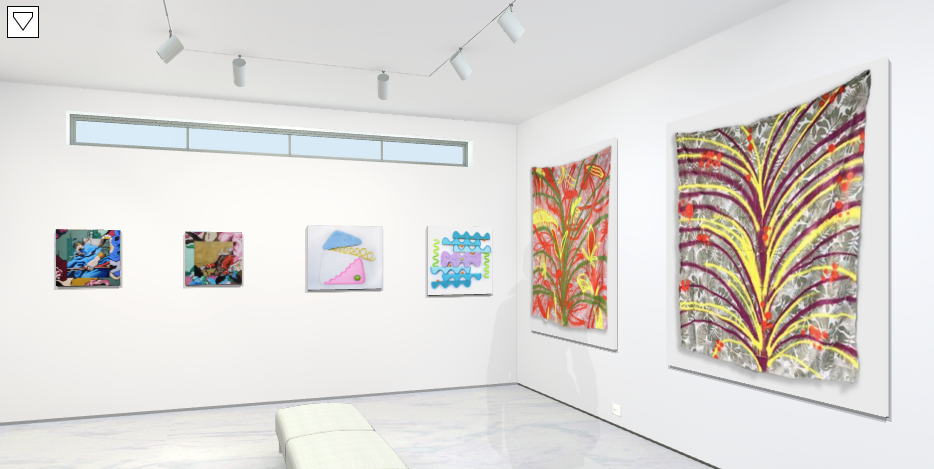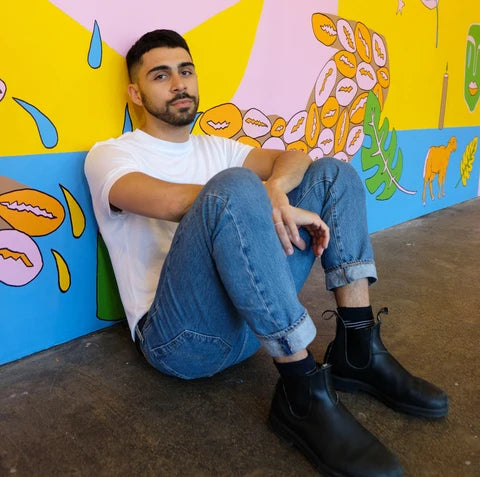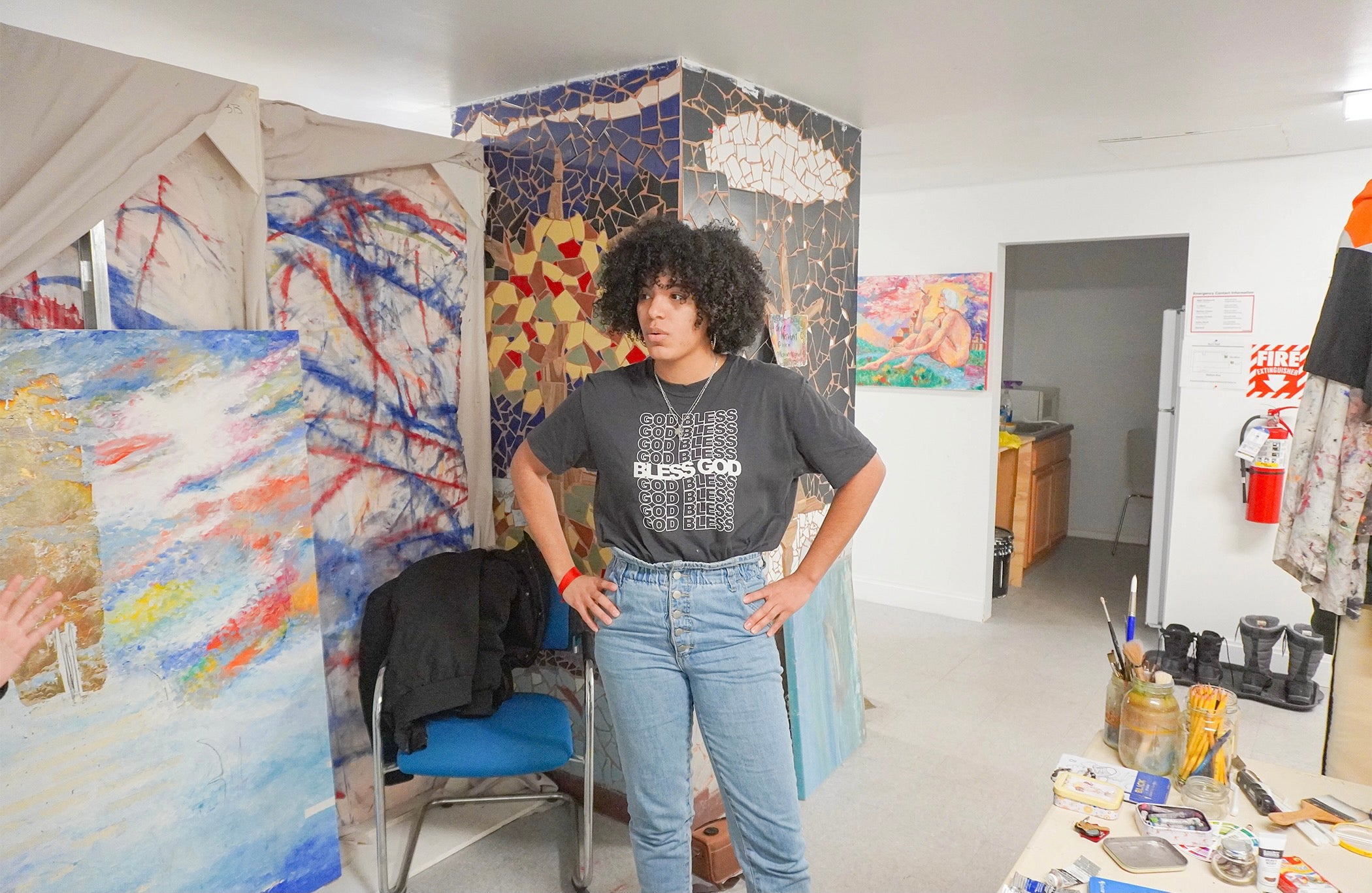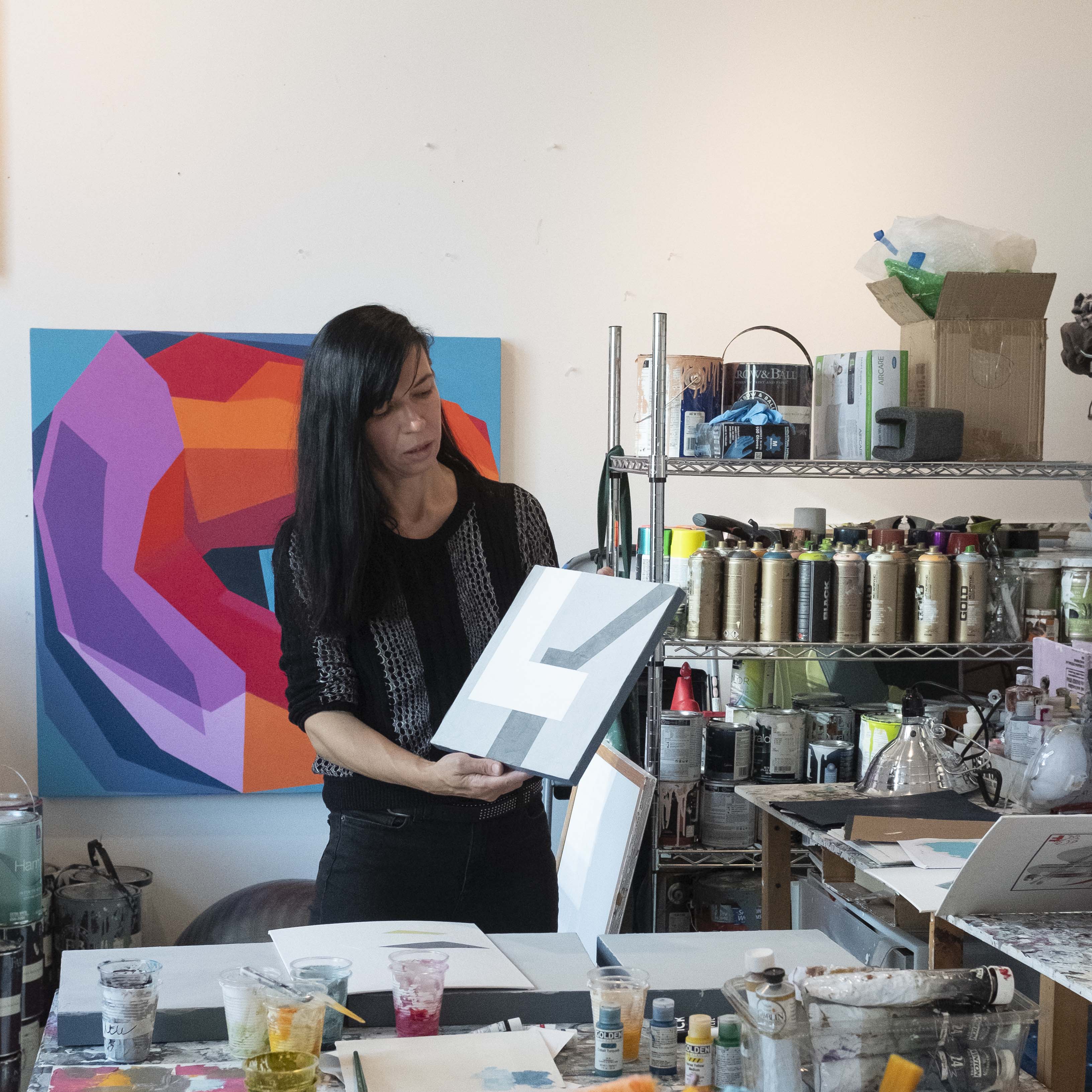No Products in the Cart

“Buds who taste things together stick together.” - Friendsgiving
“You’re so cute, I could just eat you up!” - grandmas
“My love was so intense, it consumed me.” - cheesy smut novels
While you can see, hear, and smell things from a distance, taste happens at an extremely close encounter. As immediate the satisfaction is, as vulnerable it leaves us during the act. Perhaps that’s why it’s such an intimate experience to share with others - “salty”, “sweet”, and “bitter” are all words that describe subtle emotions, while sharing way too much food is key to any culture’s holiday ritual.
With this exhibition, we’re giving our eyeballs a long-due vacation to explore how we can deploy a different sense to experience art. Hopefully, we can extend this exercise to imagining forms of physical closeness apart from the conventional romantic partner. Are you ready to be taste buds with me?
Taste as a model of intimacy
(No, we don't mean in the Hannibal kind.)
We are so used to grasping everything with our eyes and visual arts behind "do not cross" tape is the epitome of that. Compared to this constant noise of seeing everything around you, advertisements, and digital screens, taste often feels like something we only sporadically enjoy at the dining table. But we’ve all, at one point in our lives, learned the world through taste first, when we were babies putting everything in our lives. You don’t have to tell me - I was known as the toddler who kept eating pebbles.
To venture beyond the tyranny of vision, artists and theorists have been studying what we call Haptics.
 Christian Marclay, Hand to Ear
Christian Marclay, Hand to Ear
Haptics basically refers to the sense of touch, but emphasizes the back-and-forth aspect of it.
Haptic technology, for example, can be found on your own phone when you create a motion with your fingers so that the software responds by opening a certain function. It is a model of communication where you don’t just touch things, but things touch back.
Moreover, haptics embraces the fact that our senses exist in a dynamically changing environment.
Namely, it’s not just between one part of the body and one stimuli, which is the common misunderstanding that taste occurs on the tongue and tongue only. In fact, taste as we experience it is vaguely defined as a combination of temperature (is it temperature hot or spicy hot?), texture (silky tofu or crunchy crackers?), visual presentation (you’ve heard about certain colors decreasing appetite), physical hunger, emotional state...and the list continues.
Taste and vision are already so entangled. Does the visual representation of food assist or undermine taste? Does posting food pictures on Instagram help you enjoy the meal more or distract you from it?

In a wider sense, this environment includes the highly complex culture that we experience taste within.
The distinction between simply “eating” and “taste” are most evident in our use of the term “taste” of “flavor” to describe personal preferences: taste in music, fashion, design, etc… It’s as if, if you’re understanding food in terms of taste and not fullness, pleasure instead of necessity, you’re already well off enough to enjoy the finer things in life.
So the expanded term taste has a lot to do with class and the expression of it.
But good taste doesn’t always correspond to good taste. Some do, of course, like expensive restaurants serving ridiculously small amounts of food to emphasize the delicacy of flavors over quantity, or having professionals like sommeliers tell you “objectively” how good a food item is. Or the Michelin star system, for that matter.
In other cases, social ritual becomes so emphasized that it’s no longer about tasting individual foods, per se. How about overindulging at feasts that results in huge waste, which back in the days was a form of power display that only nobles could enjoy?
 Workshop of Jan Brueghel the Younger (Flemish, 1601-1678), The Sense of Taste
Workshop of Jan Brueghel the Younger (Flemish, 1601-1678), The Sense of Taste
Tasting things together confirms an ultimate level of trust. Or the absence of.
An interesting example of lavish feasts is the potlatch, which is where the word potluck comes from. Practiced by Indigenous Peoples of the Pacific Northwest Coast of Canada and the United States, "potlatch" literally translates "to give". An ostentatious event where the community leaders give away their treasured goods and food, it puzzled European observers because, well, aren't we supposed to be selfish? This event was so important for Indigenous societies that settlers once tried to officially ban it, to no avail.
Listen to what anthropologist Marcel Mauss says about potlatches in the Polynesian islands:
"To understand completely the institution of 'total services' and of potlatch, one has still to discover the explanation of the two other elements that are complimentary to the former. The institution of 'total services' does not merely carry with it the obligation to reciprocate presents received. It also supposes two other obligations just as important: the obligation, on the one hand, to give presents, and on the other, to receive them." (Mauss, Marcel. The Gift: The Form and Reason for Exchange in Archaic Societies. W.W. Norton, New York: 1990 paperback ed.)


Although not many of us have jewelry or furniture to give away, we experience the potlatch dynamic when we host dinners. You offer unconditional service to your exclusive group, which confirms to them that you truly care - but without saying it, they also know that to be a good friend, they should reciprocate in one way or the other.
As a social experience, taste can both delimit and expand the boundaries of communities.
Culture-specific flavors like spice or umami is an easy tell about somebody's lived experience. Really, can you imagine French cuisine without cheese or Korean food without gochujang (red pepper paste)? It's really hard to fake it either - unlike how you can stare and pace around in a gallery to put on the cultured person persona. You have lived with a certain set of tastes from the moment you were born, and it has become a part of you at the chemical level.
Not surprisingly, taste and smell are believed to be most linked to memory
In the age of globalized cuisine, the new potluck is learning about not only new tastes but whole haptic cultures behind them. As Nicola Perullo states in Haptic Taste as a Task: “I believe it is appropriate today to move from a culture of taste, based on an elevation strategy, to a culture with taste, which emphasizes educated nurture.”
Sources
https://www.frontiersin.org/articles/10.3389/fpsyg.2019.02520/full
https://www.sfaq.us/2016/10/touching-to-see-haptic-description-and-21st-century-visual
https://www.norden.org/en/information/aesthetics-haptics-and-taste
https://www.contempaesthetics.org/newvolume/pages/article.php?articleID=385
https://academic.oup.com/monist/article-abstract/101/3/261/5034672







